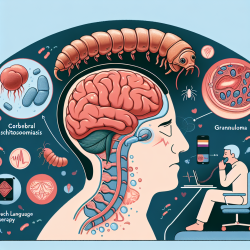Introduction
The COVID-19 pandemic has brought unprecedented challenges to educational institutions, particularly in the realm of special education. As a Special Education Director, understanding and implementing effective risk governance strategies is crucial. The research article "Risk Governance in the Early Pandemic: Governance Roles and Coleman’s Taxonomy of Social Actors" by Jeremy Schulz offers valuable insights into how risk governance can be conceptualized through the lens of social actors, as defined by James Coleman.
Understanding Coleman’s Taxonomy
Coleman’s taxonomy categorizes social actors into three primary types: natural persons, agents/principals, and citizen-sovereigns. This framework is instrumental in understanding how different actors can play roles in governance, especially during a pandemic. By applying this taxonomy, we can better navigate the complexities of risk governance in educational settings.
Application in Special Education
In the context of special education, where interactions are often more personalized and involve a variety of stakeholders, Coleman’s taxonomy can guide the development of tailored risk governance strategies. Here’s how each actor type can be involved:
- Natural Persons: These include students and their families. Effective communication and collaboration with these stakeholders are essential. Educators can empower families by providing clear guidelines and resources to manage risks at home.
- Agents/Principals: This category includes teachers, therapists, and school administrators. They are responsible for implementing safety protocols and ensuring compliance within the school environment. Training and resources should be provided to support these actors in their roles.
- Citizen-Sovereigns: This group encompasses policymakers and government bodies that establish overarching guidelines and policies. Advocacy for policies that support safe learning environments is crucial.
Implementing Risk Governance Strategies
To implement effective risk governance strategies, educational leaders should consider the following steps:
- Develop Clear Protocols: Establish clear safety protocols that align with public health guidelines and are tailored to the needs of special education settings.
- Foster Collaboration: Encourage collaboration among all stakeholders, including families, educators, and policymakers, to ensure a unified approach to risk management.
- Provide Training and Resources: Equip educators and staff with the necessary training and resources to implement and monitor safety measures effectively.
- Engage in Continuous Evaluation: Regularly assess the effectiveness of risk governance strategies and make adjustments as needed based on feedback and changing circumstances.
Encouraging Further Research
While Coleman’s taxonomy provides a robust framework for understanding risk governance, further research is needed to explore its application in diverse educational contexts. Practitioners are encouraged to delve deeper into this area to enhance their understanding and improve their practice.
To read the original research paper, please follow this link: Risk Governance in the Early Pandemic: Governance Roles and Coleman’s Taxonomy of Social Actors.










